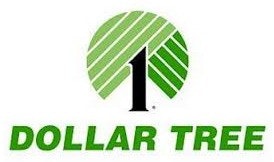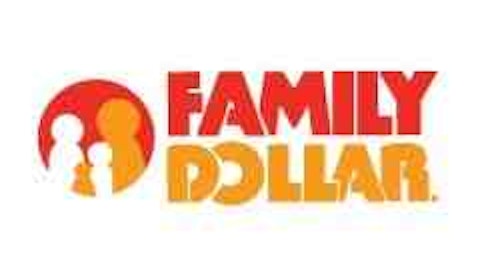In the current economic scenario, stocks of dollar stores might be one of the most reliable options to park your money. Even under unfavorable conditions, these stores performed quite well, and as the economy improves, investors can anticipate much better returns.
This is mainly due to the fact that there are a large number of consumers who are price sensitive. As a result, there is a growing demand for valued products at attractive prices which will drive the growth of these stores.

Let’s discuss these stocks in detail.
Dollar Tree – the price leader
Dollar Tree, Inc. (NASDAQ:DLTR) reported solid fourth-quarter 2012 results, with comp sales increasing 2.4% as compared to 1.6% in the previous quarter. This growth was mainly driven by the acceptance of payment cards (credit and debit cards) and the holiday shopping season.
Just by accepting MasterCard as a mode of payment, the company gained 1.4% in its average transaction size in the fourth quarter. Considering the fact that card transactions are larger than cash transactions, I expect this trend to be favorable for the company in the future too. Additionally, during the holiday season, Dollar Tree, Inc. (NASDAQ:DLTR) added 40% more items targeting cash constrained customers.
Another major reason behind its growth is its geographical expansion and better retail formats. It invested around $312 million in 2012 in expansion, and saw a rise in its square footage growth by 7.7%. Moving forward, the company is planning to invest another $320 million-$330 million in 2013 on similar lines.
These investments are mainly directed towards two areas — opening new stores and renovating the existing ones. Dollar Tree is targeting at opening about 340 new stores, and also relocating more than 70 stores in 2013 across the U.S. and Canada.
Other than these planned projects, more new stores are expected to open in 2013 under Deal$ — a subsidiary of Dollar Tree, Inc. (NASDAQ:DLTR). Deal$ is better known for its $1 deals, which offer the under-served urban customers with products ranging around $1. This concept has helped the company create brand awareness and capture more market share in the $1 retail market. It opened 194 Deal$ stores in 2012, and aims at increasing that number by 15% in 2013.
Catching up – Dollar General versus Family Dollar
The other two players of the industry are also coming up with various initiatives to capture higher market share, giving a tough fight to Dollar Tree. Along with pricing, Dollar General and Family Dollar are focusing more on promotional activities and expansions to compete against each other.
The promotions
Dollar General Corp. (NYSE:DG) saw some sharp price cuts in its products, with some price promotions like “New Lowered Prices on 1100 items” referring to discounted prices on as many as 1100 items.
Price cut signage were also noticed, located at the center of its stores, which stated “Compare to Family Dollar and save!” referring to its inexpensive prices in direct competition to Family Dollar. It has put “Price Cut” signage across all categories, and has seen positive response from consumers.
This was rolled out in December 2012, and following the positive response, the company ran another price cut promotion in February 2013. This will definitely raise the volumes in the short run, but raise some serious concerns about margins.
Family Dollar, in response to Dollar General Corp. (NYSE:DG), has also come up with its own promotional activities, such as apparel clearance and front entrance clearance. Along with this, the company also introduced cigarettes in its stores for the first time to increase sales volumes.
This alone could add around 200-300 bps in the comps in 2013. On the other side, Family Dollar’s initiatives in such consumables will produce good top-line results. But, the mix tends towards lower margin consumables, which will hurt margins in the near-term, affecting the overall profitability.
The expansions
Dollar General is making huge investments to open new stores, as well as remodel its existing stores. The company is planning to open more than 600 new stores and relocate around 500 stores in 2013. It saw increase in its square footage growth by 7%, and expects to sustain the same substantial growth over the next few years. Dollar General Corp. (NYSE:DG) is also set to make a move into other demographic areas, especially California, where the company sees good opportunity to gain market share.
On similar lines, Family Dollar saw square footage and new stores growth of 5-6% and 5-7%, respectively. In the coming few years, the company is targeting at more than 11,000 new stores, including 1000 in California alone. The company sees this as a big opportunity to improve its sales and profitability, as the Californian market is currently under-penetrated.
Conclusion
All the three stocks discussed above are worthy of consideration. Their consistent good performance, along with the continuous increase in the number of new stores, makes the stocks promising. Dollar Tree, Inc. (NASDAQ:DLTR) seems to deliver the highest top-line growth among its industry competitors, and will continue to maintain the same momentum in the coming years. As for Dollar General Corp. (NYSE:DG) and Family Dollar, solid expansion plans, along with their promotional initiatives, will definitely help them to enhance their volumes.
The article Why You Will Love These Dollar Stocks More in 2013 originally appeared on Fool.com and is written by Shweta Dubey.
Copyright © 1995 – 2013 The Motley Fool, LLC. All rights reserved. The Motley Fool has a disclosure policy.

